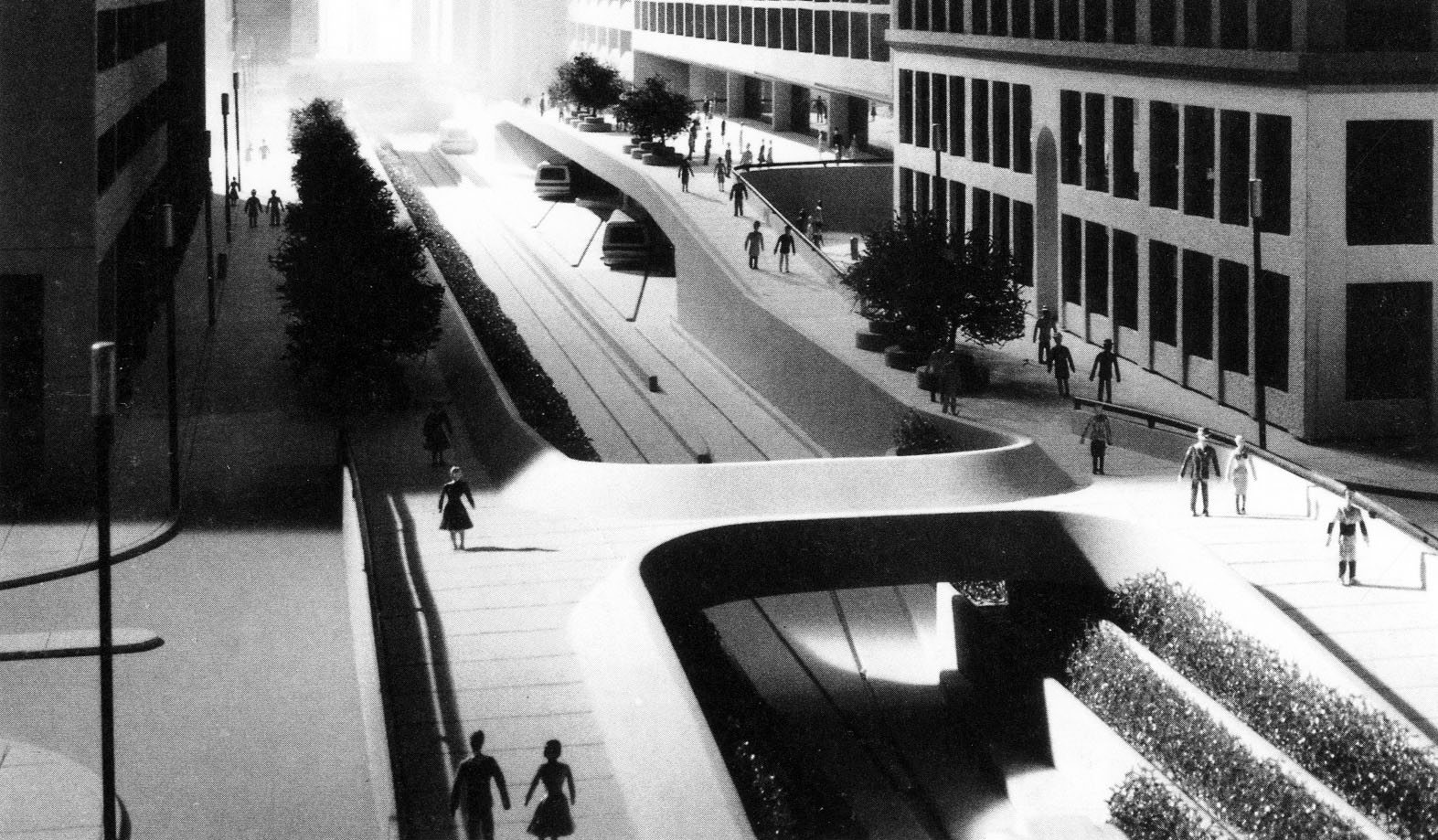Take Shape, v. 2: Commute
Journal Article, 2018
In response to a call for articles addressing the daily commute, I wrote an article that discusses two radical infrastructure
projects for Detroit designed in the early 1970s by the architect Gunnar Birkerts.
I offered these projects as models for the kind of visionary thinking that is
increasingly necessary after decades of deferred maintenance and disinvestment has
decimated transit infrastructure in some cities. They show that the
infrastructure and transportation systems we have inherited are in no way
inevitable—opportunities for dramatic rethinking do arise, and we must
capitalize on them if we want to create more equitable and appealing urban
environments. The seemingly imminent rise of autonomous vehicles offers
exactly this kind of opportunity, and these projects show how radical we can
and should be, particularly in chronically underserved cities like Detroit. Both Birkerts projects were in a sense “driverless.”
They freed commuters from the tyranny of other drivers—by relocating them
underground, or by raising commuting lines above the fray. In recent years,
autonomous vehicles have captured imaginations and investment dollars, and
Detroit is again an important location for technological testing. But despite
the long history of driverless technology and debate about transit priorities,
this testing has so far been framed both ahistorically and apolitically. The article revisited two forgotten cases, hoping to reopen possibilities long
foreclosed by political “realism.” The visionary alternatives these projects
offered remain potent images for radical urbanists.
Scale Model of Gunnar Birkerts and Associates’ Dual Mode Transit Study for Detroit. Photograph by Balthazar Korab.
Scale Model of Gunnar Birkerts and Associates’ Dual Mode Transit Study for Detroit. Photograph by Balthazar Korab.
